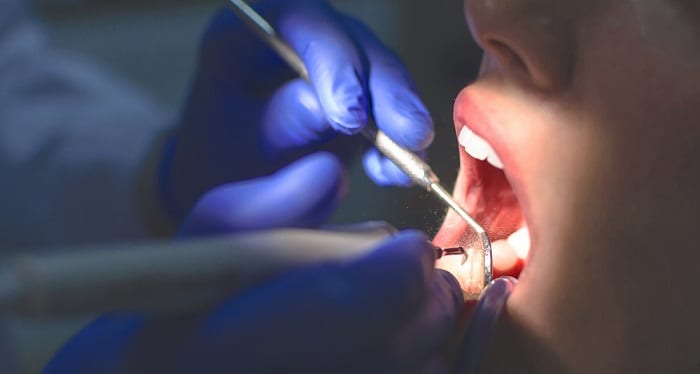At Hancock and Johnston Dentistry, you get more than just a cleaning. We examine your teeth to detect for tooth decay, gum disease, oral cancer and more. We also take preventative measures to protect your teeth and inform you of possible problems. We may perform a saliva test to check for pathogens that cause periodontal disease. Our saliva tests can also reveal susceptibility to other diseases including heart attacks, strokes, diabetes and cancer. Healthy gums contribute greatly to your overall health and well being.
You will receive a thorough examination during your oral hygiene visit. This will allow us to better inform you on the health of your teeth and gums.
 Oral Hygiene Services We Provide:
Oral Hygiene Services We Provide:
Diagnostic services may include:
- Examination of your teeth to detect decay
- Necessary cavity detecting X-rays
- Evaluation and assessment of your periodontal (gum) tissue
- Checking your biting, chewing and swallowing patterns
- Reviewing and updating your medical history
- Recording any changes in your prescribed medications and physical condition
- Treatment planning
- Evaluating possible cosmetic enhancements of your smile
Preventive services may include:
- Oral cancer examination and screening
- Blood pressure check
- Application of fluoride
- Application of pit and fissure sealant
- Cleaning and scaling of teeth to remove all plaque and calculus (tartar)
- Removal of surface stains from the teeth
- Referral to specialists for specific treatment
- Polishing your gold, silver or composite resin fillings or crowns
Educational services may include:
- Tooth brushing and flossing instruction
- Nutrition counseling
- Case presentation of prescribed dental treatment
- Recommendation of future treatment (orthodontics, periodontal therapy, etc.)
Good Oral Hygiene Begins At Home
Once your dentist or hygienist has completed your oral hygiene appointment, there are a few simple things you can do to continue a regimen of good oral hygiene at home. They include proper flossing and brushing, as well as eating a balanced diet.
Daily Flossing Removes Plaque and Food Particles
Plaque is the number one cause of tooth decay, gum disease and bad breath. Here’s how you can remove plaque with dental floss:
- Use a piece of dental floss approximately 18″ long. Wind each end of the floss around your middle fingers.
- Holding the floss tightly between your thumbs and forefingers, leave about an inch of floss. Using a gentle, back and forth motion to guide the floss in between your teeth. Avoid snapping the floss, as this may cause unnecessary irritation to the gums.
- When the floss is at the gum line, curve it into an arc around each tooth until there is mild resistance.
- Holding the floss in the arc design, gently slide it up the side of the tooth, moving the floss away from the gum.
- Repeat this procedure on both sides of each tooth.
Give Plaque The Brush
Choose a toothbrush with soft, nylon bristles; the tips of the bristles should be smooth and rounded. We will be happy to recommend a specific brush that best meets your dental needs. Here’s what to do:
- Place the head of the toothbrush next to your teeth, with the bristle tips at a 45 degree angle next to the gum line.
- Move the brush back and forth in a small circular scrubbing motion.
- Brush the outer surfaces of all teeth, upper and lower. Make sure you keep the bristles angled against your gum line.
- Now brush the inside tooth surfaces, using the same brush strokes.
- To reach the inside surfaces of your front teeth, tilt your brush vertically and use gentle, up-and-down strokes with the head of the brush.
- Scrub the chewing surfaces of all back teeth.
Keep Your Smile For A Lifetime
Good oral hygiene is a great habit to get into! In addition to having routine dentist cleaning appointments, you should brush and floss daily and eat a balanced diet. Keep your smile sparkling for a lifetime!
